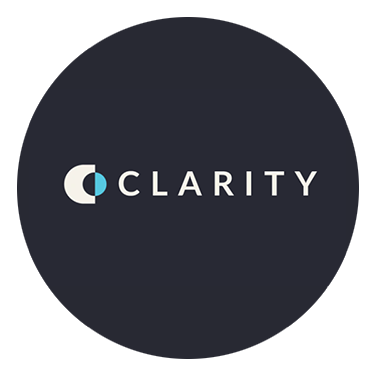How to Price Your Aesthetic Services... and When to Raise Them
Jan 24, 2021 9:00:00 AM • Written by: Clarity Technologies

Whether you are thinking about opening an aesthetics practice or have been in business for years, determining your pricing strategy for your services requires research; an understanding of the competitive landscape in the local market, your target demographics; your brand identity (your prices communicate the perceived value of your services to your clients); as well as knowing your practice’s financial numbers (or using assumptions in your Pro Forma if you are a startup). The only way to determine if your services are priced correctly is if you know EXACTLY what it costs to perform each one.
Here are a few costs to consider when determining how to price your aesthetic services.
Know your market and competition
Within the Clarity Analytics Business Intelligence Dashboards, our clients have access to national, state, and local benchmarking data for aesthetic services. If you are not currently an Clarity Technologies client, you can still find out competitor pricing in your area. One way to do this is to secret shop your competition by calling other practices in the area and posing as a patient interested in having a certain procedure or service done. Just make sure you call from a cell phone or private line, not the direct number of your practice.
If the front desk teams at the practices you call have been trained the right way, they won’t just give out prices without trying to learn more information and book a consultation. Chances are, however, they may just give you the price over the phone. You can also check your competitors’ websites to see what services/procedures they offer and whether they have pricing listed. Make sure to compare the credentials of their providers and practice and take note of how they communicate their Unique Value Proposition (UVP).
Make sure your practice also has a clear UVP, and that your team can communicate it to prospective clients. You want to make sure your front desk and entire staff can credential both your providers and the practice, which in turn helps to dissipate a price objection.
Ideally, you want your prices to fall within 20% of the “competitive norm” in your market. You don’t want to be more than 20% higher unless that is part of your UVP and brand identity, and your target demographics are clientele who are willing to pay top dollar for your services.
Know your gross profit margin and your fixed expenses
Before you set prices, you need to look at your gross profit margin, costs associated with providing each service, and your fixed expenses. If you are a startup, you can use the assumptions in your Pro Forma to gauge your gross profit and fixed expenses.
When building your pricing strategy, I find it helpful to think about your household income, minus your expenses. You have fixed costs every month (a mortgage or rent, utilities, insurance, car payments, etc.). If you know your fixed expenses are $5,000 per month, and your salary is $8000 per month, you will have $3,000 a month leftover of discretionary income or profit.
Now think about your practice. If you know your gross profit margin is 60%, that means you get 60 cents per every dollar you earn. The other 40% is your costs associated with providing the service (cost of goods, costs of labor, and merchant processing fees).
Then, ask yourself, “Does that 60% profit margin give me enough money to pay all of my fixed overhead costs (lease or mortgage payment, loan and device payments, marketing, utilities, insurance, and administrative staff - not the providers who are performing services as that is included in the 60% profit margin, etc.) If you can pay all your fixed expenses out of the 60% (for example your fixed expenses amount to 20% of every dollar you earn), that means you have 40% net profit to pay yourself a salary, invest, or save money each month
Gross Profit Revenue – Cost of Goods (Cost of Consumables + Provider Labor) = Gross Profit Margin
Gross Profit Margin – Fixed Expenses = Net Profit
Even if you have a healthy amount of money left over each month, we still find that many practices are undercharging for their services. The only way to truly know if your pricing strategy is on point and profitable is to know the costs it takes to provide each service. It really is as simple as that. Then you must know your break-even point with fixed expenses to determine if you are charging enough for each service.
Calculate Your Profit Per Treatment
Profit Per Treatment provides a snapshot of the actual profit of each service or procedure that you offer in your practice after cost of goods. So, you're going to get your gross profit before the cost of labor. Determining your Profit Per Treatment is an exercise that helps you build your Revenue Per Hour. It also provides you with an ongoing document to keep updated as vendor prices increase, so that you'll know if you need to increase your prices so you can maintain a proper gross profit.
Within the Clarity Practice Performance System, we have a Profit Per Treatment calculator that can automatically determine your gross profit margin for you by simply inputting your own practice data.
Here is an example of the types of data you need to calculate these numbers yourself for each service you provide within your own practice data:
Service: Service is defined as “what the patient is purchasing” or the charge listed on the invoice (whether it is a package of several services, by the unit or by the syringe).
Units or Quantity: Quantity is typically 1, whether you are selling 1 single service or package of 3. The exception is when the charge is determined by the number of units, such as in the case of toxins or dermal fillers.
Treatment Patient Price: The price the patient pays for the service or the unit price if calculating price by units.
Cost of Goods: This is the cost of consumables that are specific to this treatment. If the service is a package, remember to multiply the Cost of Goods by the number of services in the package.
Minutes to Perform: These are the actual minutes to perform the service sold. If this is a package, then you would multiply the single service minutes to perform by the number of treatments in the package.
Previous 12 Month Revenue Per Service: Profit Per Treatment tells you the Gross Profit percentage before Costs of Labor, but it also serves to prepare you for building your practice’s Revenue Per Hour. Your actual Revenue Per Hour is based on a weighted average of benchmarked revenue. If you do not have 12 months of revenue (if for example, you have recently opened or just added a new service), then input a previous benchmarked period you do have.
Category of Service: This is the Category of Service your service falls under (toxins, fillers, skin resurfacing, surgery, etc.) These Categories of Services will be inputted when you start to build your Revenue Per Hour.
Here is an example using Halo Facial:
- Treatment: Halo Facial
- Quantity: 1
- Patient Fee: $1800
- Costs of Goods: $99 (only cost of consumables)
- Minutes to Perform Service: 50 minutes (separate numbing area)
- Benchmark Revenue for past year: $47,599
- Service Category: Laser Skin Resurfacing
When we plug this information into our Clarity finacial calculator, the average hourly fee is $2,160 and the gross profit is $1,701 or 94.5%
Other Costs You Should Know
- Cost of Equipment: You need to factor into your fixed expenses any monthly expenditure for loans and leases on devices.
- Labor Costs: To determine pricing, you must account for the hourly earning rate and bonus of your providers.
- Time and Space Costs: Another factor used to determine pricing is the total amount of time attached to a service, including the time it takes to set up and clean up – in other words the total time allocated for each service/procedure per room.
- Fixed Costs/Practice Overhead: Your total practice overhead is an important number to know when determining pricing. You must consider your lease cost or mortgage payment; your marketing expenses, loan payments, and other overhead costs such as cleaning service, supplies, etc.
How to Know When to Raise Prices
If your costs of consumables related to each service increase, or your merchant processing fees increase, or your provider has a salary increase, or your overall fixed costs increase, it indicates it may be time to raise your prices. If your Revenue per Hour per room or per provider is too low, it may mean your prices are too low.
Knowing your numbers is critical to making informed decisions on the types of services you provide and your price per service. When you have these calculations, you can then decide which services you want to do more of and which ones you want to reduce or eliminate. If you look at your service mix in addition to revenue per hour, you can see how much time you are spending on performing treatments/surgeries that are not yielding a high return on investment.
This can be a confusing topic. If you would like to see a demo of how you can use the built-in financial optimization calculators (including Profit Per Treatment and Revenue Per Hour) found within the Clarity Practice Performance System, our team would be happy to set up a demo call with you.
Clarity Technologies
Clarity Technolgoies offers the world's first Practice Performance System. With a commitment to fostering growth and success for medical practices, we bring unparalleled expertise to the forefront. Through our articles, our team of experts share valuable insights, tips, and industry knowledge that will elevate your practice to new heights.
